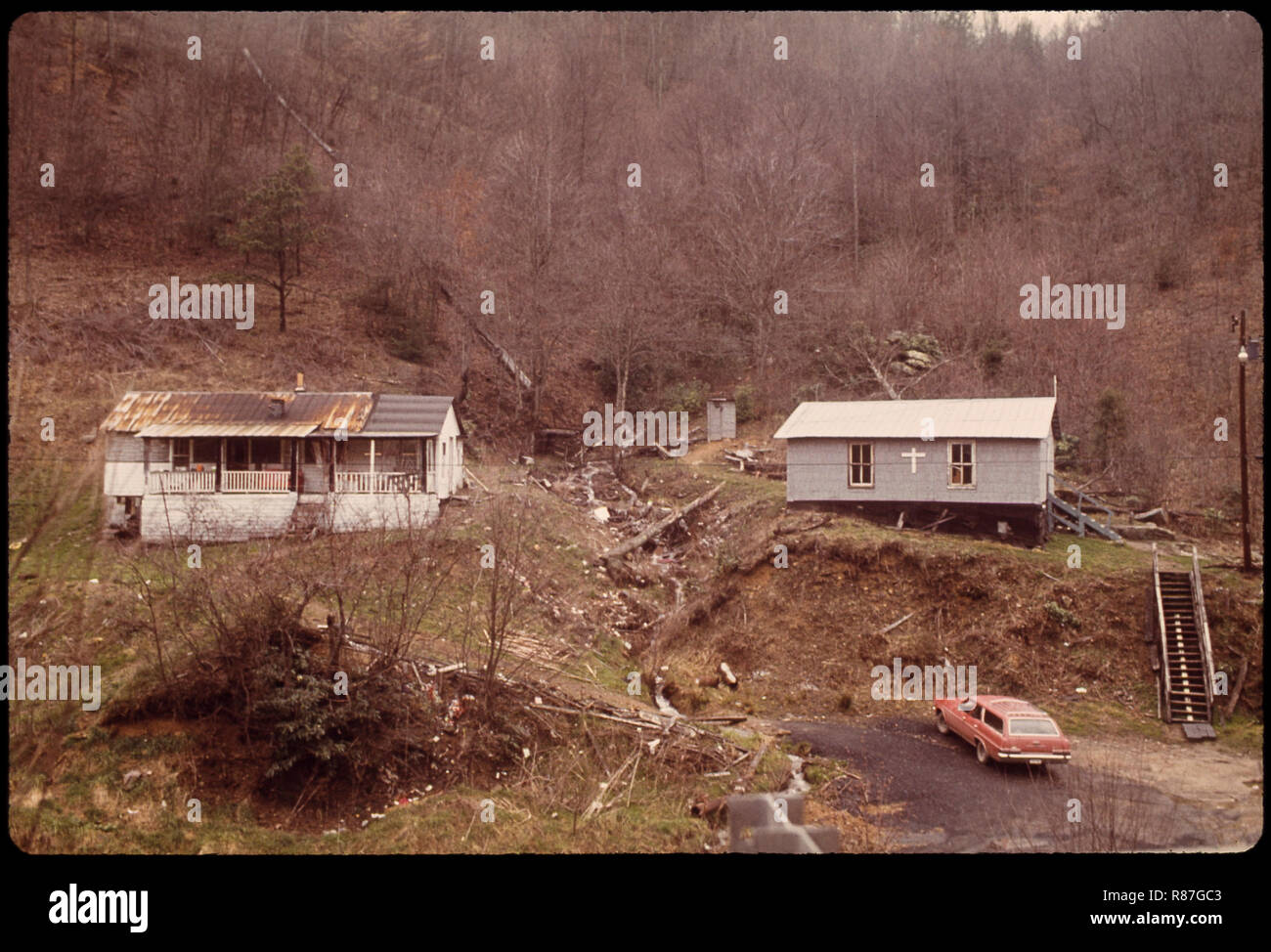Landscape

Image details
Contributor:
American Photo Archive / Alamy Stock PhotoImage ID:
R87GC3File size:
17.5 MB (885.1 KB Compressed download)Releases:
Model - no | Property - noDo I need a release?Dimensions:
3000 x 2041 px | 25.4 x 17.3 cm | 10 x 6.8 inches | 300dpiDate taken:
April 1974Location:
Tennessee, West Virginia,Kentucky USAMore information:
This image could have imperfections as it’s either historical or reportage.
Coal was mined in America in the early 18th century, and commercial mining started around 1730 in Midlothian, Virginia.[67] The American share of world coal production remained steady at about 20 percent from 1980 to 2005, at about 1 billion short tons per year. The United States was ranked as the second highest coal producing country in the world in 2010, and possesses the largest coal reserves in the world. In 2008 then-President George W. Bush stated that coal was the most reliable source of electricity.[68] However, in 2011 President Barack Obama said that the US should rely more on "clean" sources of energy that emit lower or no carbon dioxide pollution.[69] For a time, while domestic coal consumption for electric power was being displaced by natural gas, exports were increasing.[70] US net coal exports increased ninefold from 2006 to 2012, peaked at 117 million short tons in 2012, then declined to 63 million tons in 2015. In 2015, 60% of net US exports went to Europe, 27% to Asia.US coal production increasingly comes from strip mines in the western United States, such as from the Powder River Basin in Wyoming and Montana.[71] Coal has come under continued price pressure from natural gas and renewable energy sources, which has resulted in a rapid decline of coal in the U.S. and several notable bankruptcies including Peabody Energy. On 13 April 2016 it reported, that its revenue had reduced by 17 percent as coal prices fell and that it had lost two billion dollars the previous year.[72] It then filed Chapter 11 bankruptcy on 13 April 2016.[72] The Harvard Business Review discussed retraining coal workers for solar photovoltaic employment because of the rapid rise in U.S. solar jobs.[73] A 2016 study indicated that this was technically possible and would account for only 5% of the industrial revenue from a single year to provide coal workers with job security in the energy industry as whole.